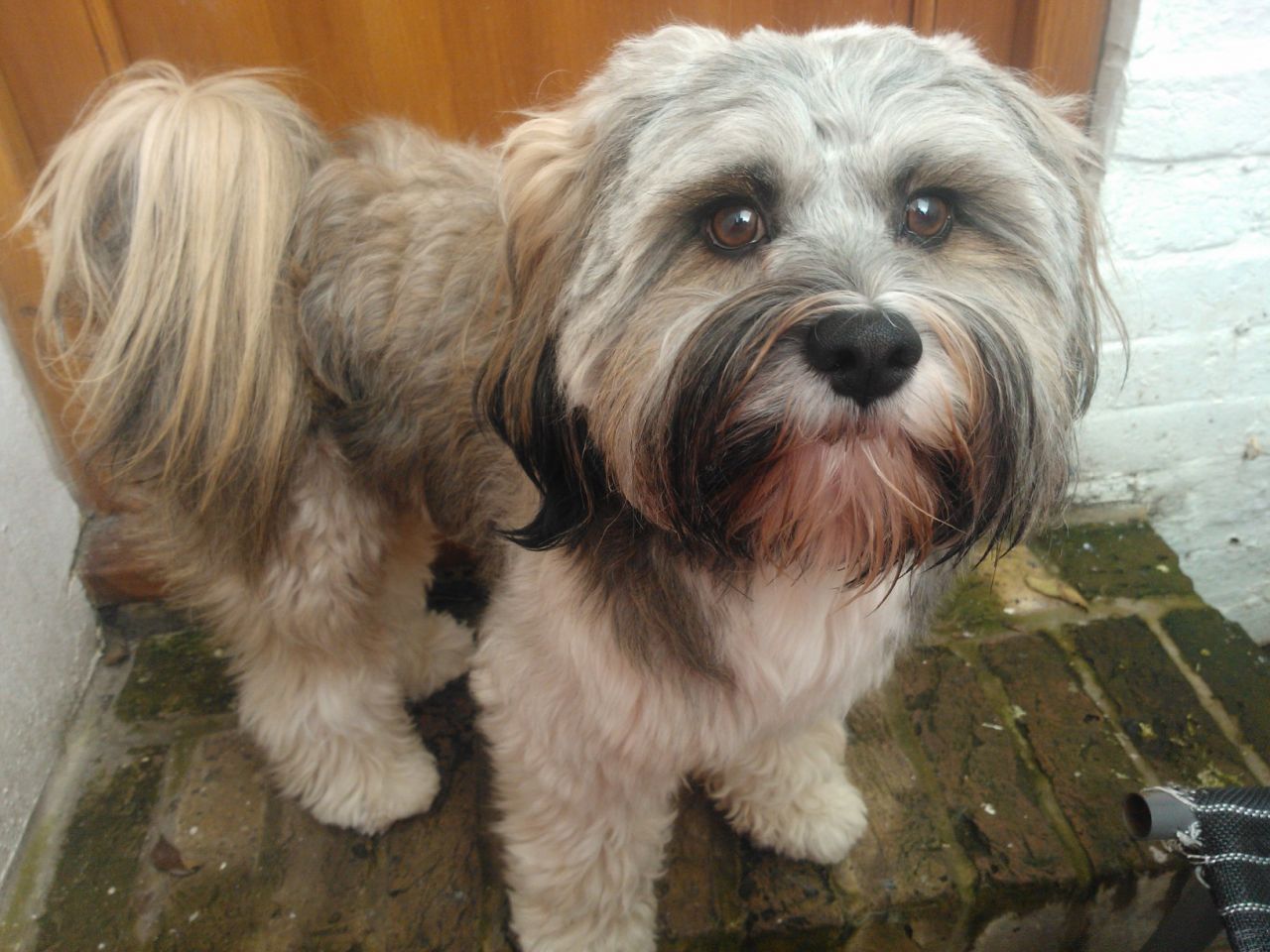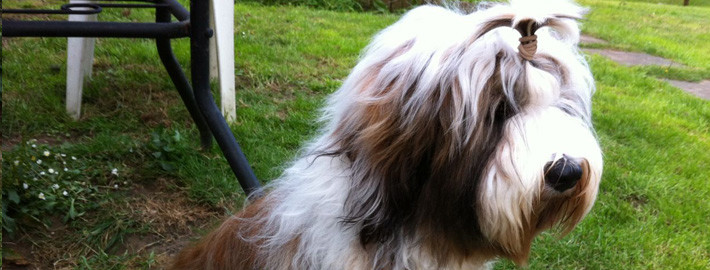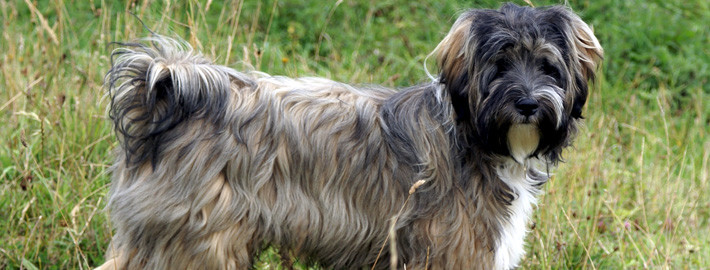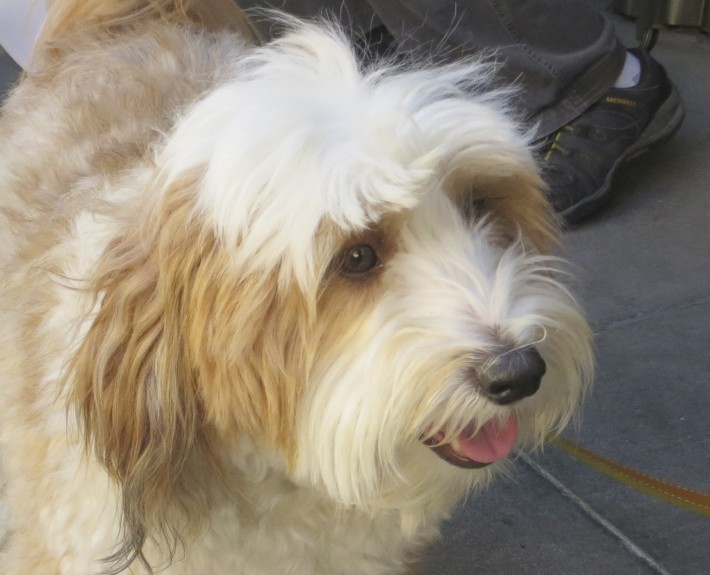What makes the Tibetan Terrier Unique?
Tibetan Terriers are intelligent people pleasers that are somewhat prone to mischief. These gentle giants make great companion for rural and city dwellers.
Breed Groups
Page Contents

Is the Tibetan Terrier Right For You?
Tibetan Terriers are a family oriented breed that can easily read the moods of their owners. Members of this breed have a definite sense of humor and may even try to cheer up someone that is feeling blue. These generally pleasant, playful, and easy going dogs are good companions for older children.
These dogs can be somewhat stubborn but they respond well to patient, consistent training. Rewards based instruction also works well for member of this breed. It is best that owners instill the fact that they are the leader in their pet’s mind early on to avoid problems from arising.
In 5 Words
- Reserved
- Amiable
- Gentle
- Energetic
- Sensitive
Characteristics
Learn About the Tibetan Terrier
Description
General Description
These medium sized dogs have square shaped bodies, black noses, and moderately sized heads. Tibetan Terriers may also have a level, scissors, or reverse scissors bite. Members of this breed also possess large, dark brown eyes that are set far apart. Their drooping v-shaped ears should hang close to their heads. Their backs should be flat and their curly tails are feathered. The front legs on this breed are somewhat shorter than their back legs. Tibetan Terriers have large, round feet that function similarly to a snowshoe, which is an asset in their native environment, as it allows them to move effortlessly across snowy ground. Occasionally, these dogs will have their dewclaws removed.
Size
Dogs of both genders should stand between 14 and 16 inches (35 and 40 centimeters) in height and weigh between 18 and 30 pounds (8 and 14 kilograms).
Coat
Tibetan Terriers have double coat that features a wooly inner layer and a thin, wavy outer layer. Except for liver and chocolate hues, all colors and patterns are acceptable for members of this breed. There are no preferred colors for Tibetan Terriers. According to American Kennel Club breed standards, these dogs should not have silky or wooly outer coats. Dogs that are to be shown cannot have their coats stripped, sculpted or otherwise altered as doing so is considered to be a serious flaw.
Short History of the Tibetan Terrier
For over two thousand years, Tibetan Terriers have been bred in isolation in the mountainous regions of their homeland. Historically, these dogs were given as gifts and never sold. This is because they were thought bring good fortune to their owners. The reverse was also true and those that harmed Tibetan Terriers could incur bad luck as result. These dogs were popular as livestock guardians, companions, and watchdogs in monasteries and ordinary households. Around 1922, the breed made its way to England. Two years later, the first litter was born and registered under the name of Lhasa Terriers. By the 1930s, the breed’s name had been changed to Tibetan Terrier. By the late 1950s, these dogs had made their way to the United States. The American Kennel Club recognized the breed in 1973 as part of their non-sporting group.
Temperament
Tibetan Terriers are a family oriented breed that can easily read the moods of their owners. Members of this breed have a definite sense of humor and may even try to cheer up someone that is feeling blue. These generally pleasant, playful, and easy going dogs are good companions for older children. Members of this breed also get along well with other pets. These dogs can be reserved around unfamiliar people at times, but they are neither shy nor aggressive. In fact, extreme shyness is considered to be a flaw in individual dogs. Tibetan Terriers make good watchdogs as this task is greatly in line with their original purpose. Of course, these dogs are not prone to excessive barking as is the case with some watchdog breeds. Prospective owner should note that some members of this breed may end up being more protective than others. Tibetan Terriers will do well in apartment settings as long as they receive appropriate amounts of exercise.
Caring for Your Tibetan Terrier
General Health
Members of this typically healthy breed can easily live 12 or more years, but many have a lifespan of more than 15 years. Common concerns for Tibetan Terriers include progressive retinal atrophy and lens luxation. Both of these conditions may result in eventual blindness in one or both eyes. Hip dysplasia, hypothyroidism, flea allergies, congenital deafness, obesity, and other eye ailments are additional concerns for members of this breed. Regular hip and eye tests will help owners pinpoint any specific problems as they arise.
Care
Daily
Members of this breed need daily exercise. Their daily excursions can be broken into several 15 minute intervals or take place all at once.
Weekly
These dogs should be brushed several times per week in order to keep their fur from getting tangled. Twice a year, members of this breed will go through a period of heavy shedding and will need to be groomed on a daily basis. It is also a good idea to cleanse a dog’s teeth regularly to prevent both bad breath and periodontal disease.
Monthly
Parasite prevention medication is a must for all dogs and these products are normally used once a month.
Grooming & Bathing
Owners should be aware that this breed has significant grooming needs. The Tibetan Terrier Club of America states on their website that even dogs which are kept clipped in short puppy cuts will need to be groomed on a regular basis. Tibetan Terriers will also need to be bathed either once a week or once a fortnight. Any excess hair in their ears or on their feet will need to be clipped. Dogs that are not being shown may benefit from having their coats clipped short during the summer time. It is a good idea to make sure that their ears stay clean and their toenails stay trimmed.
Exercise & Training
These dogs can be somewhat stubborn but they respond well to patient, consistent training. Rewards based instruction also works well for member of this breed. It is best that owners instill the fact that they are the leader in their pet’s mind early on to avoid problems from arising. These dogs are happiest when they can live inside with their people rather than outside the backyard. Tibetan Terriers greatly enjoy having a fenced yard to play in but, even so, they should not be left outside unattended. When bored, these dogs may bark to entertain themselves. Escape attempts are also likely as members of this breed can easily climb over the fence or tunnel under it. During their daily excursions, these dogs should be kept on a leash as they have tendency to otherwise misbehave.











